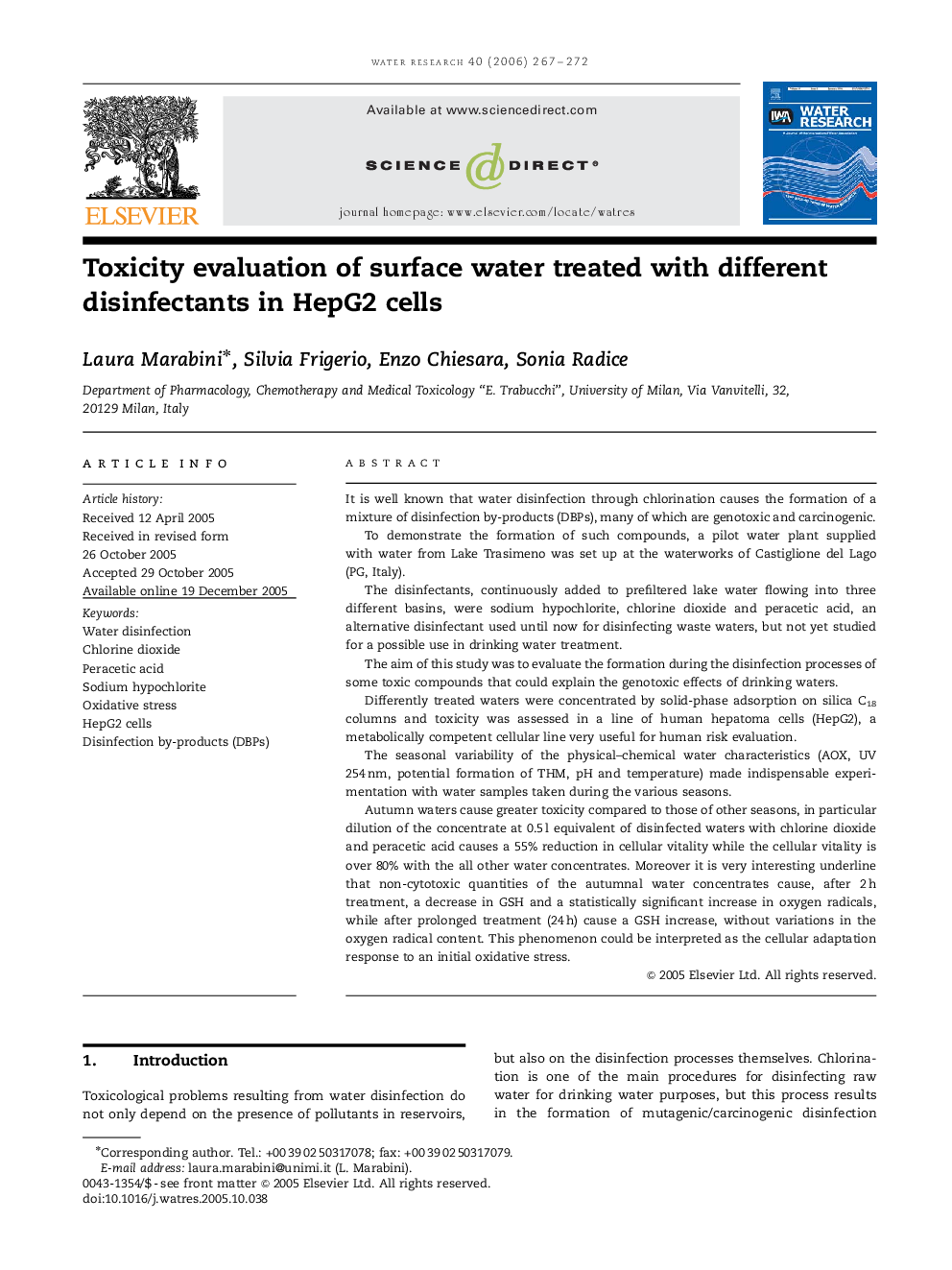| کد مقاله | کد نشریه | سال انتشار | مقاله انگلیسی | نسخه تمام متن |
|---|---|---|---|---|
| 4487288 | 1317023 | 2006 | 6 صفحه PDF | دانلود رایگان |

It is well known that water disinfection through chlorination causes the formation of a mixture of disinfection by-products (DBPs), many of which are genotoxic and carcinogenic.To demonstrate the formation of such compounds, a pilot water plant supplied with water from Lake Trasimeno was set up at the waterworks of Castiglione del Lago (PG, Italy).The disinfectants, continuously added to prefiltered lake water flowing into three different basins, were sodium hypochlorite, chlorine dioxide and peracetic acid, an alternative disinfectant used until now for disinfecting waste waters, but not yet studied for a possible use in drinking water treatment.The aim of this study was to evaluate the formation during the disinfection processes of some toxic compounds that could explain the genotoxic effects of drinking waters.Differently treated waters were concentrated by solid-phase adsorption on silica C18 columns and toxicity was assessed in a line of human hepatoma cells (HepG2), a metabolically competent cellular line very useful for human risk evaluation.The seasonal variability of the physical–chemical water characteristics (AOX, UV 254 nm, potential formation of THM, pH and temperature) made indispensable experimentation with water samples taken during the various seasons.Autumn waters cause greater toxicity compared to those of other seasons, in particular dilution of the concentrate at 0.5 l equivalent of disinfected waters with chlorine dioxide and peracetic acid causes a 55% reduction in cellular vitality while the cellular vitality is over 80% with the all other water concentrates. Moreover it is very interesting underline that non-cytotoxic quantities of the autumnal water concentrates cause, after 2 h treatment, a decrease in GSH and a statistically significant increase in oxygen radicals, while after prolonged treatment (24 h) cause a GSH increase, without variations in the oxygen radical content. This phenomenon could be interpreted as the cellular adaptation response to an initial oxidative stress.
Journal: Water Research - Volume 40, Issue 2, January 2006, Pages 267–272